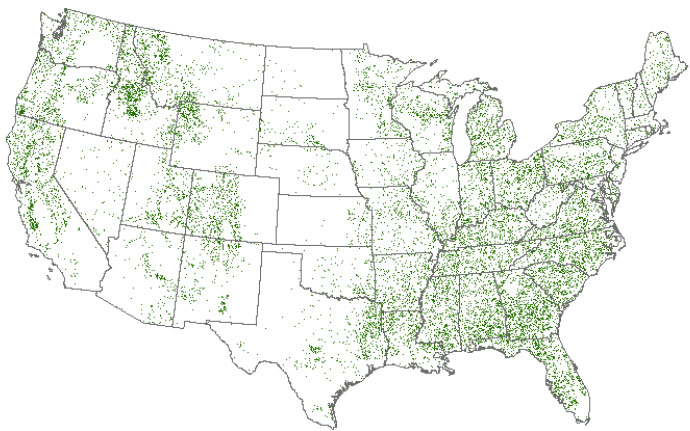Limiting the effects of climate change to the greatest extent possible will require reducing greenhouse-gas (GHG) emissions and removing GHGs from the atmosphere. In addition, the shared goal of the countries that have entered into the Paris Climate Agreement is to keep global warming below 2 degrees Celsius, relative to pre-industrial average global temperatures. Toward this goal, a team of researchers from 22 institutions reported in Science Advances (November 2018) 21 natural climate solutions that could offset (mitigate) 21 percent of the United States’ annual greenhouse-gas emissions. See also: Global climate change; Greenhouse effect; Paris climate agreement

The natural climate solutions are reforestation (planting trees), natural forest management, fire management, avoided forest conversion, urban reforestation, improved plantations (extended time between harvesting forests), cover crops, avoided conversion of grassland, biochar (charcoal used as a soil amendment), alley cropping (growing crops between wide rows of trees), cropland nutrient management (avoided emissions of NO2 from nitrogen fertilizers), improved manure management (avoided CH4 emissions), windbreaks (reduced wind erosion), grazing optimization, grassland restoration, legumes in pastures, improved rice management (avoided emissions of CH4 and NO2), tidal wetland restoration, peatland restoration, avoided seagrass loss, and seagrass restoration. See also: Agricultural soil and crop practices; Cover crops; Forestry; Marine conservation; Potential uses of biochar; Reforestation; Restoration ecology
Of the natural climate solutions, planting trees would have the greatest potential for removing carbon from the atmosphere and storing it. The researchers also reported that natural climate solutions could be implemented at a low cost, with some costing nothing at all. Co-benefits identified when implementing natural climate solutions include greater biodiversity, food security, and clean air and water, as well as economic benefits. Compared to geoengineering, for which there is no short- or long-term solution at hand, natural climate solutions entail taking care of the land, which is logical and practical. This is not to say that geoengineering will not be needed if conditions significantly change; however, the benefits of natural climate solutions are immediate. See also: Conservation of resources





